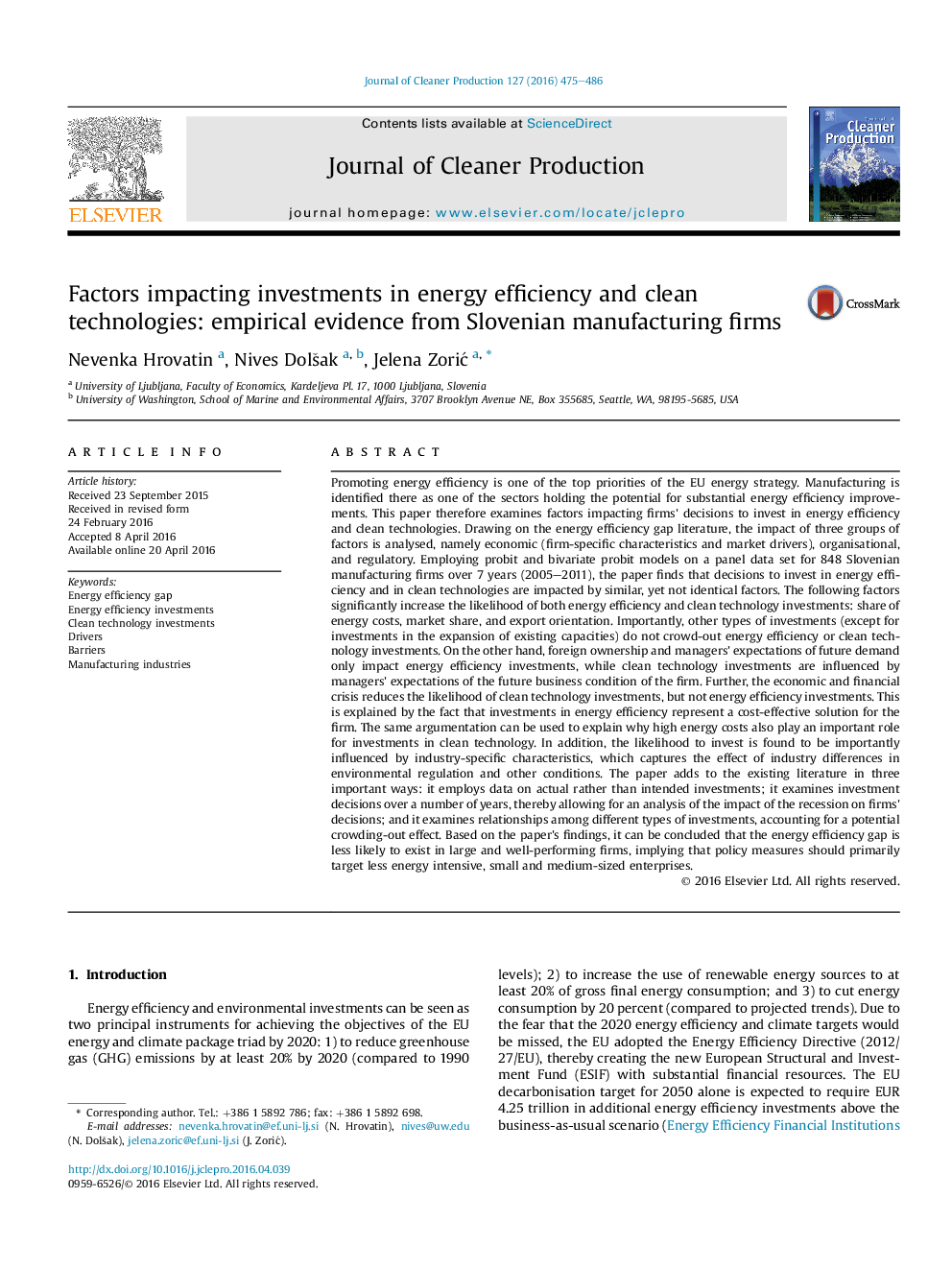| کد مقاله | کد نشریه | سال انتشار | مقاله انگلیسی | نسخه تمام متن |
|---|---|---|---|---|
| 1744105 | 1522122 | 2016 | 12 صفحه PDF | دانلود رایگان |

• We examine factors impacting energy efficiency and clean technologies investments.
• Key drivers for both are high energy cost, firm size and international competition.
• Except for capacity expansion, other investments do not act as a barrier.
• Environmental norms and capacities do not appear to impact the investments.
• Financial and economic crisis hindered clean technologies investments only.
Promoting energy efficiency is one of the top priorities of the EU energy strategy. Manufacturing is identified there as one of the sectors holding the potential for substantial energy efficiency improvements. This paper therefore examines factors impacting firms' decisions to invest in energy efficiency and clean technologies. Drawing on the energy efficiency gap literature, the impact of three groups of factors is analysed, namely economic (firm-specific characteristics and market drivers), organisational, and regulatory. Employing probit and bivariate probit models on a panel data set for 848 Slovenian manufacturing firms over 7 years (2005–2011), the paper finds that decisions to invest in energy efficiency and in clean technologies are impacted by similar, yet not identical factors. The following factors significantly increase the likelihood of both energy efficiency and clean technology investments: share of energy costs, market share, and export orientation. Importantly, other types of investments (except for investments in the expansion of existing capacities) do not crowd-out energy efficiency or clean technology investments. On the other hand, foreign ownership and managers' expectations of future demand only impact energy efficiency investments, while clean technology investments are influenced by managers' expectations of the future business condition of the firm. Further, the economic and financial crisis reduces the likelihood of clean technology investments, but not energy efficiency investments. This is explained by the fact that investments in energy efficiency represent a cost-effective solution for the firm. The same argumentation can be used to explain why high energy costs also play an important role for investments in clean technology. In addition, the likelihood to invest is found to be importantly influenced by industry-specific characteristics, which captures the effect of industry differences in environmental regulation and other conditions. The paper adds to the existing literature in three important ways: it employs data on actual rather than intended investments; it examines investment decisions over a number of years, thereby allowing for an analysis of the impact of the recession on firms' decisions; and it examines relationships among different types of investments, accounting for a potential crowding-out effect. Based on the paper's findings, it can be concluded that the energy efficiency gap is less likely to exist in large and well-performing firms, implying that policy measures should primarily target less energy intensive, small and medium-sized enterprises.
Journal: Journal of Cleaner Production - Volume 127, 20 July 2016, Pages 475–486